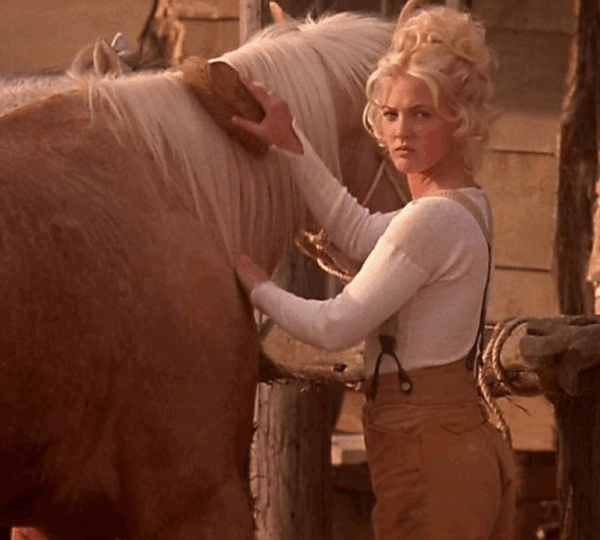
Revisiting Bad Girls: The 1994 Western That Challenged the Norms
While classic Westerns often focus on rugged cowboys, quick gunfights, and dusty towns, Bad Girls rewrites the rules with a fierce female-led cast—Cody, Lilly, Anita, and Eileen—who refuse to be sidelined. These women aren’t waiting for rescue; they are the ones taking charge, fighting for their freedom, and defining their own destinies. Each character is unique: Cody, played by Madeleine Stowe, is a skilled sharpshooter with a difficult past; Anita, portrayed by Mary Stuart Masterson, combines intelligence and bravery;
Andie MacDowell’s Eileen offers quiet but steady strength; and Drew Barrymore’s Lilly Laronette is the wild, unpredictable heart of the group, full of raw emotion and loyalty. Lilly’s complexity and impulsiveness bring a fresh, honest energy to the film, showing that strength is not about perfection but about authenticity. What sets Bad Girls apart from many other Westerns is its emotional depth. The four women share moments of conflict, support, and vulnerability that feel genuine.
Their bond is central—not just a plot device but the soul of the movie. They steal trains, face off against dangerous enemies, and escape ambushes, all while dealing with personal struggles and forming a sisterhood built on trust and resilience. The film also explores heavier themes like betrayal, survival, and the search for trust in a harsh world. These emotional layers add richness to the action and adventure, making Bad Girls more than just a shootout story.

Although the film initially received mixed reviews, with some critics dismissing it or saying it didn’t fully deliver on its feminist promise, audiences saw its value. Over time, Bad Girls developed a cult following, especially among viewers who craved stories where women led boldly and unapologetically.
The legacy of Bad Girls lies in how it opened doors for female characters in a genre traditionally dominated by men. It gave its women flaws, agency, and power, showing that they could be just as complex, tough, and compelling as their male counterparts. In a genre known for stoic heroes, Bad Girls introduced emotional honesty and female camaraderie as new strengths.

More than 30 years after its release, Bad Girls still stands as a powerful reminder that heroism wears many faces, including those in corsets and cowboy boots. The film’s defiant spirit and bold storytelling continue to inspire, proving that breaking the mold can leave a lasting impact on cinema history.